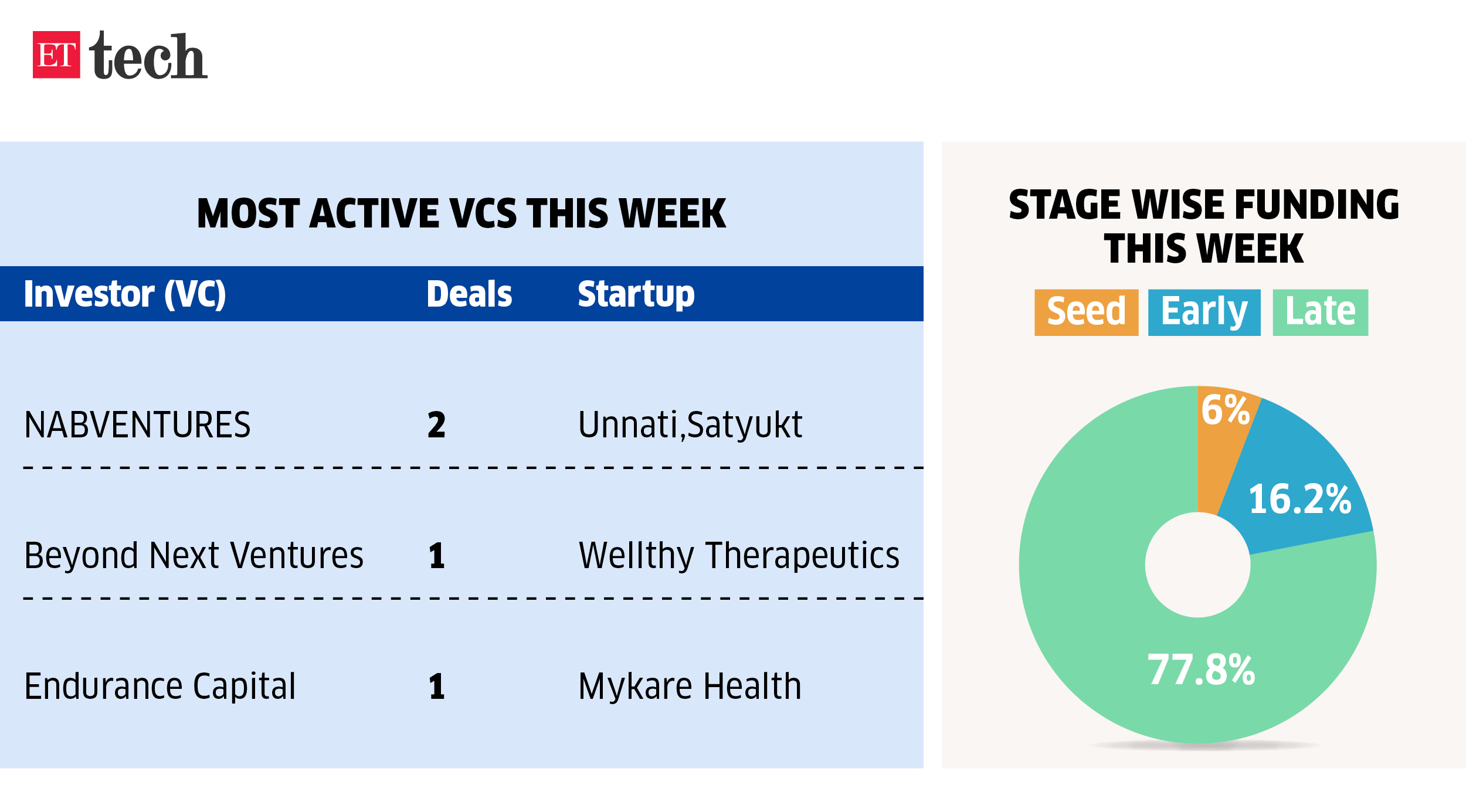Also in this letter:
■ ETtech Deals Digest
■ Nykaa’s take on premium beauty segment
■ New norms to counter online dark patterns
Boat leans on software, offline play to boost revenue by 25%
Wearables brand Boat is looking to add Rs 1,000 crore to its revenues in FY24 after hitting a record $500 million (approximately Rs 4,000 crore) in net sales in FY23. Without disclosing profit figures, cofounder Sameer Mehta said Boat has been in the black since its first year of operations. It aims to keep the high ground on a ramped-up software play and a robust offline presence that should push up revenue by 25% this year.
Driving the news: Boat assembled around 15 million products in India, which includes 70% of its audio products and about 98% of its smartwatches which contributed to a 20-22% growth over the last year in net sales – a first for the company.
Future playbook: Going forward, Boat will procure most of the components for audio products locally from India including the mechanics, plastic molds, speaker drivers and batteries. However, Mehta said, the company will still have to rely on Chinese design houses for the design and engineering verification tests.
Market share: Boat leads the hearables segment with a 30.6% market share as of Q1 2023, as per IDC India. Nearly 70% of its revenue comes from audio products, a segment where it grew 82% year-on-year in Q1. For smartwatches, Boat plans to move away from a hardware-first model to a software-based ecosystem play.
Funding rounds & IPO: ET reported on October 28 that Boat closed a $60-million (about Rs 500 crore) financing through convertible preferred stocks notes from existing investor Warburg Pincus and new investor Malabar Investments at a minimum valuation cap of $1.2 billion. Last May, it had formally withdrawn its Rs 2,000 crore IPO plans.
Govt kickstarts process to select firms for cell-making PLI scheme

Companies planning to make advanced battery cells in India are set for a booster shot that could help them to qualify for the government’s Rs 18,100-crore production-linked incentives (PLI) scheme. This is a welcome move, coming as it does almost a year after Hyundai Global Motors was disqualified for misrepresenting itself as having ties with the eponymous leading automaker.
Tell me more: The government has kickstarted the process of selecting companies for subsidising up to 20 gigawatt-hour (GWh) of battery cell-making capacity as part of the PLI scheme for advanced chemistry cells (ACC). IFCI, the project management agency for the scheme, will be hiring a consulting firm for revising the bid document.
Yes, but: There is a rider though. Companies that are on a waitlist for the scheme will also have to apply for the scheme afresh as significant time has elapsed since then. These include Mahindra & Mahindra, Exide Industries, Larsen & Toubro, Amara Raja Batteries, and India Power Corporation.
Budget push for EV cells: The government exempted customs duties on components required to manufacture lithium-ion cells in this year’s Budget. The move is likely to benefit companies making electric vehicle (EV) battery cells locally, aiding domestic manufacturing leading to an overall decrease in the prices of EVs.
Also read | Log9 opens India’s first lithium-ion cell manufacturing facility
ETtech Deals Digest

The ongoing funding winter for Indian startups looks unlikely to end anytime soon with new-age companies scooping up only $174 million across 20 rounds last week, according to data provided by market intelligence firm Tracxn.

Funding activity in Indian startups declined 83% from the same period last year, when companies had raised $1.05 billion across 60 rounds.

Sequentially, startups raised 71% more money compared to the $102 million they raised last week from 21 rounds.
The sequential boost in funding could be attributed to private equity fund ChrysCapital’s $100 million investment in omni-channel eyewear retailer Lenskart.

Here’s a list of all the startups that raised funding this week
Top-end beauty products’ demand to outpace mass segment: Nykaa

Falguni Nayar, founder, Nykaa
India’s beauty and personal care (BPC) category is expected to get a premium glow in the next three years, says beauty and fashion retailer Nykaa. The premium segment is likely to pip the mass segment which could see a drop to 45% of the overall BPC category from 55% now.
Report findings: Nykaa’s estimate suggests that consumer preference in the BPC category is shifting from personal care to beauty products as a rise in per capita gross domestic product (GDP) will likely push up consumer spending. Nykaa recorded a per-customer spend in the BPC category at around $80 in the last 12 months, significantly higher than the $15 per capita spend nationally.
‘House of brands’ strategy: Nykaa is looking to push its ‘house of brands’ strategy, that is focussed on acquiring and organically building its own brands in both the BPC and fashion categories. In the BPC category, Nykaa owns 12 brands, and during FY23 its owned brands contributed Rs 789 crore, or roughly 12% to the segment’s gross merchandise value.
Financials: During the March quarter, Nykaa’s parent FSN E-Commerce Ventures posted a 33% jump in revenue year on year to Rs 1,301 crore but saw net profit fall a steep 71.83% to Rs 2.4 crore due to rising expenses.
New advertising norms target online deceptive design patterns

The Advertising Standards Council of India (ASCI) has released guidelines to tackle the scourge of dark patterns in online advertising as the government is trying to check the rampant practice of deceptive design tricks on online platforms.
Tell me more: Advertising in digital media including e-commerce, food delivery apps, and websites will be covered under the guidelines aimed at checking the menace of disguised ads and ambiguous pricing, among others. The guidelines will come into effect from September 1.
Jargon buster: Dark patterns are used by websites to trick users into granting consent to being tracked, or having their data used in ways they didn’t expect and didn’t want. Further, ASCI wants to prevent drip pricing, a practice where elements of the prices are not revealed upfront and the total price is revealed at the end of the buying process.
Full disclosure: In order to make the pricing of listings of varied products and services on online platforms transparent for consumers, the norms require quoted prices in advertisements and e-commerce sites to specify non-optional taxes, duties, fees and charges that apply to all or most buyers.
Today’s ETtech Top 5 newsletter was curated by Gaurab Dasgupta in New Delhi. Graphics and illustrations by Rahul Awasthi.
























